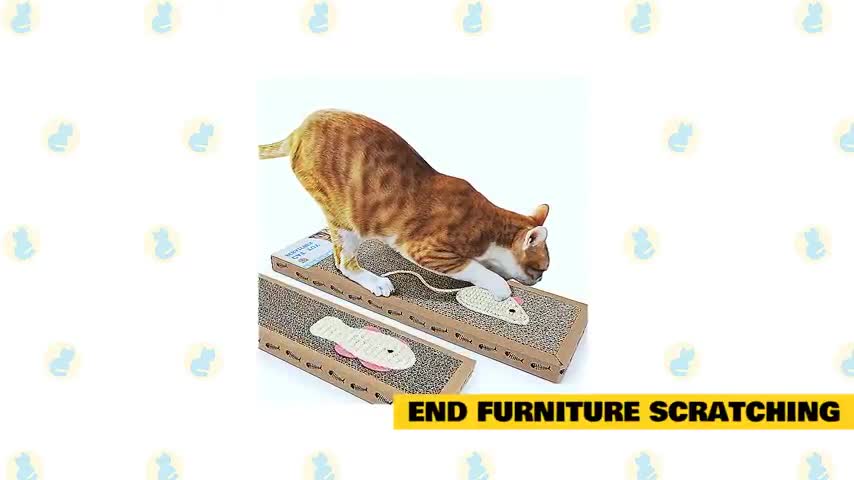Premium Only Content

Cats 101: Basic Cat Training Tips
In today's video we are going to talk about basic training tips for cats.
The cat is a very independent animal and many cat owners will tell you that it is this independence that makes the cat such a comfortable companion in the house. Cats don't require as much attention as dogs. And, unlike dogs, most cats don't make any special effort to gain your approval, often waiting for you to come towards them rather than running for your attention.
All of this means that the cat is a very easy-going, polite and self-restrained creature. But it also means that it can be difficult to train a cat. If you and your cat disagree with a certain type of behavior, you might have a hard time getting her to do things your way. However, don't give up hope, it's not totally impossible to change your cat's behavior.
The very first training you will probably want to give your cat is likely to be in the use of the litter box, for very obvious reasons.
Can a cat be trained? The answer is a "Yes!" Resounding, but it has to be done in feline terms. Everything in this video is designed to help you see the world from your cat's perspective, which is an important key to training. You can train a cat to jump through hoops or turn around on command. However, a more valuable training objective is to teach him to stay within the limits of acceptable behavior in society.
Litter training.
Training a cat to use a litter box is usually not difficult. Cats are generally clean by nature and have a natural tendency to bury their waste. Follow these steps to teach your cat to start using a litter box.
Place your cat and a clean litter box, the kind without a cover, in a confined space, such as a room in your house. Make sure your cat has enough food and clean water. If your cat "comes out" of the box, place the waste in the litter box.
Usually, within a day or two after being confined in the litter box, the cat will start using it regularly. If the cat won't use the box in a few days, try this. After the cat has eaten, place it in the litter box, then scratch the surface of the litter box a little with your finger.
If it still isn't, make sure the box is clean. If it has been used before, clean it with baking soda and fill it with clean litter. You can also try more than one type of litter box, sometimes a cat will be fine with one brand and show its nose at another brand. Also make sure that the box is located in a quiet and secluded location.
If nothing seems to be working, see your vet. Sometimes an underlying medical problem can be the cause of a cat's reluctance to use a litter box.
Finish the scratches on the furniture.
Scratching furniture is a natural feline behavior. They scratch to condition their claws, get exercise, mark their territory and just because it's fun. Remember that yelling or hitting doesn't work. Try these tips instead.
Clip your cat's claws and redirect the energy to a scratching post or cardboard notepad. Praise your cat and give her a treat every time you see her using the scratching post. Make your upholstered furniture less appealing by applying double-sided tape or spraying cat repellant around the area where your cat is scratching.
Behavioral training.
If your cat is doing things that you really prefer him not to do, there's a good chance you can lead to this bad behavior. But first, try to understand why the cat is behaving this way. There is a reason, and from a cat's point of view, of course, the behavior is perfectly reasonable.
If the cat scratches your furniture, for example, it is instinctively driven to do so. He needs to scratch something, it's a survival instinct. It doesn't have to be your furniture, but something. So there is not much chance that your cat will stop scratching. But you can train the cat to focus their claw instincts on acceptable objects, like scratching posts.
Train your cat to behave appropriately using positive reinforcement, not punishment. Do not hit the cat when it scratches the furniture.
Cat post for cat.
Spend time near the post encouraging your cat to interact with it. Play with the cat near the pole and make it part of your game. The most important step is to reward the cat every time your cat uses
▶ rabbitgoo Cat Tree Cat Tower 61" for Indoor Cats, Multi-Level Cat Condo with Hammock & Scratching Posts for Kittens, Tall Cat Climbing Stand with Plush Perch & Toys for Play Rest
▶ Coching Cat Scratcher Cardboard Cat Scratch Pad with Premium Scratch Textures Design Durable Cat Scratching Pad Reversible
▶ Henkelion Cat Carriers Dog Carrier Pet Carrier for Small Medium Cats Dogs Puppies of 15 Lbs, TSA Airline Approved Small Dog Carrier Soft Sided, Collapsible Puppy Carrier - Black Grey Pink Purple Blue
▶ Petmate Two Door Pet Kennel for Pets up to 15 Pounds
-
 LIVE
LIVE
G2G Gaming Channel
6 hours agoHelmet Day! Hope i dont need goggles too! #RumbleGaming
171 watching -
 LIVE
LIVE
Barry Cunningham
2 hours agoTRUMP DAILY BRIEFING: PRESIDENT TRUMP, ELON MUSK, AND KASH PATEL HAVE THE DEMS FREAKING OUT!
1,733 watching -
 1:58:03
1:58:03
The Charlie Kirk Show
4 hours agoTrump the Promise-Keeper + The New White House Press Corps | Gaines, Davis, Leavitt | 2.6.2025
110K28 -
 1:25:41
1:25:41
CrackingCrypto
3 hours agoBerachain Rug Alert! The Bear Market Continues Czech Removal of Capital Gains Tax
14.1K -
 1:22:11
1:22:11
Russell Brand
8 hours agoTrump in Gaza - a construction project? – SF533
121K134 -
 1:00:47
1:00:47
LFA TV
20 hours agoMAGA WRECKING BALL ON USAID | CULTURE WARS 2.6.25 2pm
23.7K7 -
 2:55:25
2:55:25
The Dana Show with Dana Loesch
4 hours agoTRUMP SIGNS EO PROTECTING WOMEN'S SPORTS | The Dana Show LIVE On Rumble!
15.9K6 -
 24:14
24:14
SLS - Street League Skateboarding
20 days agoTop Moments of Brazilian Skaters at the 2024 Super Crown: Rayssa Leal, Giovanni Vianna & more...
23.8K -
 59:24
59:24
The Dan Bongino Show
6 hours agoThey Fell Right Into Trump's Trap (Ep. 2417) - 02/06/2025
842K1.62K -
 47:26
47:26
The Rubin Report
5 hours agoBill Gates Makes ‘The View’ Crowd Go Quiet with This Chilling Warning
86.7K162